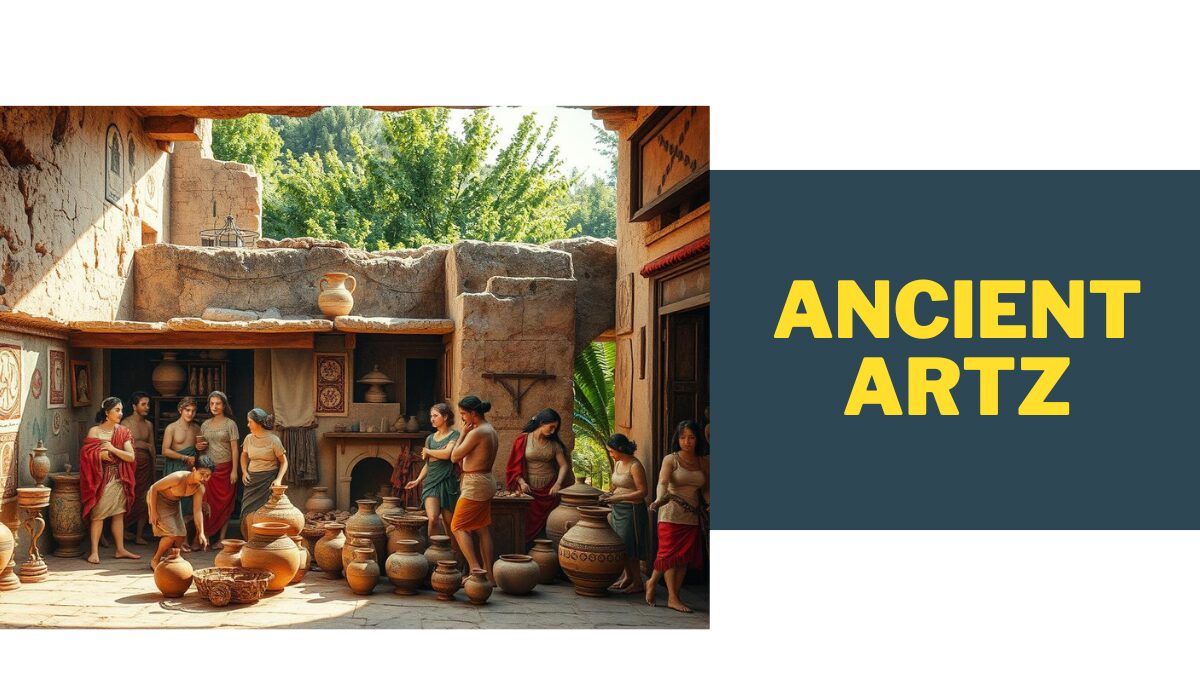In a world where innovation and modernity often take center stage, it can be refreshing and enlightening to look back at the artistic treasures of the past. Ancient art provides us with a window into the lives and cultures of those who came before us. This post will take you on a captivating exploration of ancient artz, focusing on its allure and significance to history buffs, travelers, and art enthusiasts alike. You’ll gain insights into how ancient masterpieces have shaped our world and continue to inspire and intrigue us today.
The Enduring Allure of Ancient Art
What is it about ancient art that captures our imagination? Perhaps it’s the blend of mystery and beauty, the intricate details, or the stories encapsulated in stone, ceramics, and paint. Ancient artz offer us a glimpse into the past, connecting us with civilizations long gone but not forgotten. Understanding ancient art requires us to look beyond mere aesthetics to appreciate its cultural and historical significance.
For history buffs, ancient art is a tangible connection to the past, offering clues about societies, beliefs, and daily life. Travelers find joy in exploring ancient sites and museums, experiencing the wonder of standing where artists once stood. Art enthusiasts appreciate the skill, creativity, and innovation that ancient artists demonstrated, inspiring countless generations.
Unveiling the Mystique of Ancient Art
Ancient artz are shrouded in mystique, not only for their age and beauty but also for what they tell us about ancient peoples. The allure of these artworks lies in their ability to transcend time, inviting us to explore the minds and hearts of those who created them. From the intricate hieroglyphs of Egypt to the enigmatic sculptures of Easter Island, each piece offers a story worth uncovering.
Cultural significance plays a vital role in the appeal of ancient art. Artifacts from ancient civilizations reveal a great deal about their creators’ values, beliefs, and daily lives. For example, the cave paintings of Lascaux in France are more than just primitive drawings; they demonstrate the early human need to communicate and express ideas. Similarly, the detailed carvings on the Mayan stelae tell stories of power and conquest, illustrating the importance of art in documenting history.
Artistic significance is equally important, as ancient art laid the foundations for many modern artistic principles. The Greeks perfected the use of perspective and proportion, influencing Renaissance art and beyond. Ancient Egyptian art, with its strict guidelines and symbolic imagery, served as a model for consistency and order. These contributions highlight the enduring influence of ancient art on contemporary styles.
Ancient Art Across the Globe
Ancient art is not limited to one region or culture; it can be found across the globe, each with its distinct styles and materials. From the pottery of the Japanese Jomon period to the colossal stone heads of the Olmec civilization, ancient art showcases a diverse array of techniques and purposes.
In Europe, the Venus of Willendorf, a small figurine dating back to around 28,000 BCE, represents the earliest known depiction of the human form. Its exaggerated features suggest an emphasis on fertility and reproduction, themes that have persisted throughout art history. Meanwhile, the grandeur of the Parthenon in Greece exemplifies the height of classical architecture, blending form and function in a way that still inspires awe.
In Asia, the Terracotta Army of China stands as a testament to the power and ambition of Emperor Qin Shi Huang. These life-sized clay soldiers, buried alongside their emperor, serve as both protectors and symbols of his vast empire. India’s Ajanta Caves, adorned with intricate frescoes and sculptures, provide insight into the spiritual and cultural life of ancient India, with their vibrant colors and detailed depictions of Buddhist teachings.
Africa boasts a rich artistic heritage, with the Great Sphinx and pyramids of Giza standing as iconic symbols of ancient Egypt. These monumental structures required immense skill, labor, and resources, reflecting the Egyptians’ mastery of engineering and their devotion to the afterlife. The rock art of the Sahara, on the other hand, offers a glimpse into the daily lives of prehistoric peoples, illustrating scenes of hunting, dancing, and ceremonies.
The Americas also hold a wealth of ancient art, with the Nazca Lines in Peru capturing the intrigue of modern visitors. These massive geoglyphs, etched into the desert floor, remain a mystery, with their purpose and creation still debated by scholars. In North America, the cliff dwellings of the Ancestral Puebloans reveal the ingenuity and adaptability of these early peoples, who built complex communities into the natural landscape.
The diversity of ancient art across the globe highlights the universal human desire to create and communicate. Despite differences in style and technique, these artworks share a common thread of storytelling and expression, providing invaluable insights into the human experience.
The Influence of Ancient Art on Modern Art and Society
The impact of ancient art on modern society is undeniable. It has inspired countless artists, architects, and designers, fueling creativity and innovation across various disciplines. From the neoclassical architecture of Washington D.C. to the minimalist lines of modern sculpture, ancient art’s influence can be seen everywhere.
Ancient art has also played a significant role in shaping cultural identity and fostering a sense of connection to the past. The preservation and celebration of ancient art help maintain cultural heritage and promote understanding between different societies. Museums and galleries worldwide serve as custodians of these treasures, allowing people from diverse backgrounds to appreciate and learn from them.
Tourism has also been greatly influenced by ancient art, drawing millions of visitors to iconic sites such as the Colosseum, Machu Picchu, and the Great Wall of China. These destinations not only generate economic benefits for local communities but also foster cultural exchange and understanding. Travelers are drawn to these sites for their beauty, history, and the opportunity to experience something greater than themselves.
You May Also Like:Journey Through Time Understanding Key Historical Events from 1954 to 2023
Preserving and Promoting Ancient Art
The conservation and restoration of ancient art are critical to ensuring its survival for future generations. Many ancient sites and artifacts face threats from environmental factors, human activity, and even conflict. Preservation efforts require collaboration between governments, organizations, and individuals to protect these irreplaceable treasures.
Technological advancements have revolutionized the preservation and promotion of ancient art. High-resolution imaging, 3D scanning, and virtual reality allow for the documentation and digital preservation of fragile artifacts and sites. These tools also enable the creation of virtual exhibitions, making ancient art accessible to a global audience.
Public awareness and education are essential components of preserving ancient art. By fostering an appreciation for the value and significance of these works, we can inspire future generations to continue the work of conservation and protection. Encouraging dialogue and discussion around ancient art not only enriches our understanding but also strengthens our commitment to safeguarding it.
A Timeless Legacy
The enduring appeal of ancient art lies in its ability to connect us with the past while inspiring our present and future. By exploring the mysteries and marvels of ancient artz, we gain invaluable insights into the human experience and the universality of artistic expression.
History buffs will find endless fascination in the stories and symbols encoded in ancient art. Travelers can immerse themselves in the beauty and wonder of ancient sites, gaining a deeper understanding of the cultures that created them. Art enthusiasts can appreciate the skill and creativity of ancient artists, marveling at the techniques and styles that continue to shape contemporary art.
We invite you to explore and appreciate ancient art in your travels and studies, discovering the countless stories waiting to be uncovered. Share your experiences and insights with others, and join the conversation about the significance of ancient art and its impact on our world.
Together, we can ensure that the timeless legacy of ancient art continues to inspire and captivate generations to come. Whether you’re a history buff, traveler, or art enthusiast, there’s always more to learn and appreciate in the world of ancient artz.










